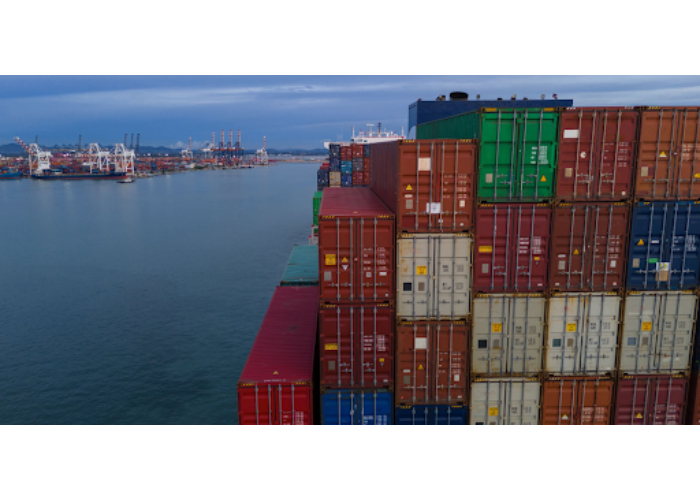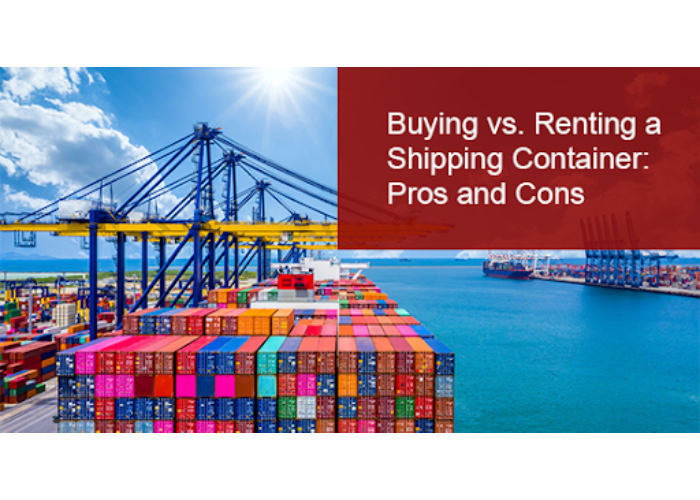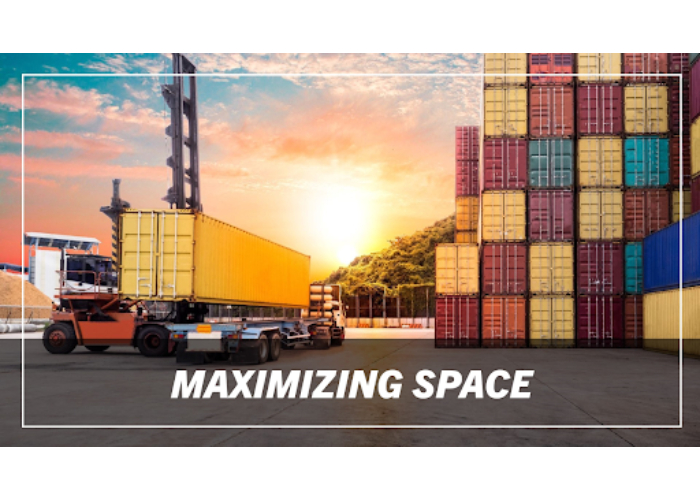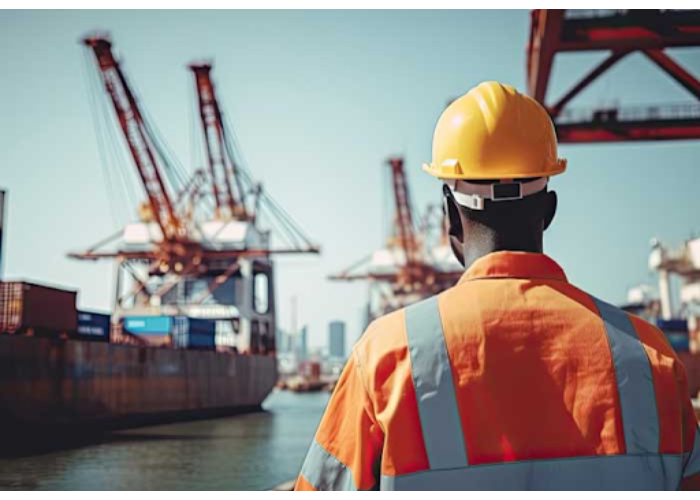Table of Contents
Introduction
Did you know that the global shipping container market is estimated to attain a valuation of $9,104.2 million in 2024 and is forecast to reach a value of $14,549.7 million by 2034, with a projected CAGR of 4.8% from 2024 to 2034?
The shipping container industry is one of the most versatile in the world. Whether you’re using a shipping container for transporting goods, storage, or construction, finding a more durable option can be challenging.
- First, several factors influence the decision to rent or buy. The most important factor you’ll need to consider is time. How long will you be using the shipping container?
- The second factor is price, which can vary significantly. Depending on the container’s purpose, you should consider its overall condition.
- Finally, what will you be using the container for? Shipping containers are not just for transporting goods domestically and internationally. Many companies also use them as temporary offices.
Some people even convert shipping containers into tiny houses! After carefully evaluating your needs, you can decide whether to rent or buy.
If you need a shipping container, you might wonder whether renting or buying is better. In this article, we’ll explain the Pros and Cons of renting versus buying, helping you make the best decision based on your needs.
Understanding Shipping Containers

Shipping containers are versatile, standardized metal structures designed to withstand transportation by sea, land, and rail. Available in various sizes (20-foot, 40-foot), these containers come in types suited to different uses:
- Standard Dry Containers: Basic, weather-resistant for general storage
- High Cube Containers: Taller than standard, offering more space
- Refrigerated Containers: Equipped with cooling systems for perishable items
- Open-Top Containers: Open roof, suitable for oversized equipment or materials
Beyond transportation, shipping containers serve as storage units, makeshift offices, and even homes. Understanding the types available and your intended use is key in deciding whether to buy or rent.
The Pros and Cons of Buying a Shipping Container

Pros of Buying
Buying a shipping container comes with several advantages, particularly for those with long-term needs:
- Cost Savings Over Time: If you plan to use the container for years, buying can be more cost-effective than rental fees, which can add up over time.
- Freedom to Customize: Owned containers can be modified to suit your exact needs. Whether you need extra windows, an HVAC system, or shelving, ownership allows for customization without restrictions.
- Flexibility and Independence: Owning a container means you can place it where you want, how you want, and use it without rental time limits or return requirements.
Cons of Buying
While buying has its perks, it also has drawbacks that may make it impractical for some:
- High Initial Cost: Buying a container requires a larger upfront investment. New containers can cost $3,000 or more, while used ones might range from $1,500 to $2,500.
- Maintenance Responsibilities: As an owner, you’re responsible for upkeep. Rust, wear, and potential structural issues all fall under your maintenance budget.
Storage Challenges: If you only need the container occasionally, finding a storage solution when it’s not in use can be a hassle and may incur additional costs.
The Pros and Cons of Renting a Shipping Container
Pros of Renting
Renting a container offers flexibility and cost savings in situations where buying may not be practical:
- Lower Upfront Cost: Renting typically costs between $75-$200 per month, making it more affordable for short-term projects.
- Short-Term Flexibility: Renting suits temporary needs, like a few months of extra storage or a construction project, with no long-term commitment.
- No Maintenance Hassles: When renting, the container’s condition and maintenance are usually the rental company’s responsibility, saving you time and money on repairs.
Cons of Renting
Renting has some limitations that may affect long-term or customized projects:
- Accruing Rental Costs: Monthly fees add up, making renting less economical for long-term use. Extended rentals can quickly exceed the cost of buying.
- Customization Limitations: Rental agreements often restrict alterations, making it hard to add features like insulation, air conditioning, or custom doors.
- Potential Penalties: Some companies charge penalties for late returns or damages beyond normal wear, which could add unexpected costs.
Cost Comparison: Buying vs. Renting

When considering the costs of buying vs. renting, it’s essential to account for the full financial picture:
- Purchase Cost: Buying a new container can cost between $3,000-$5,000, while a used one might range from $1,500-$2,500.
- Rental Fees: Renting starts at $75 per month for basic containers, but costs can go higher for specialized types.
- Maintenance and Upkeep: Owners bear the cost of upkeep, while renters are typically covered by the rental company. This makes renting more cost-effective for those wanting a hassle-free experience.
Calculating how long you need the container is vital. If a project extends over multiple years, buying may save money compared to renting for extended periods.
Long-Term vs. Short-Term Needs
One of the most significant factors in deciding between buying and renting is the duration of your need:
- Long-Term Projects: For projects lasting years or with repeated container use, buying becomes more practical and affordable in the long run.
- Short-Term Projects: For events, seasonal storage, or temporary construction, renting is the preferred choice, offering the needed flexibility without a hefty investment.
In general, if you plan to use a container for over two years, buying is often more economical, while renting suits shorter needs without a long-term commitment.
Customization and Modification Considerations
One of the biggest perks of owning a container is the freedom to modify it:
- Ownership Flexibility: Adding windows, insulation, plumbing, or HVAC is much easier when you own the container. Many people transform containers into fully functional workspaces, homes, or retail spaces.
- Rental Limitations: Rentals often come with restrictions that prevent modifications, making them less suitable for customized projects. Many rental agreements prohibit drilling or structural changes.
For unique projects requiring specific modifications, buying is generally the better option, giving you the freedom to adjust the container to your precise specifications.
Storage Requirements and Flexibility

Where you plan to store the container when it’s not in use can also play a big role in your decision:
- Space for Owned Containers: If you buy a container, you’ll need a designated storage space when it’s not actively in use. Depending on your location, storing a container on your property may require a permit or incur additional fees.
- Rental Flexibility: When renting, you typically arrange for the container to be picked up by the rental company once you’re done. This means you don’t need to worry about long-term storage, which is especially helpful if space is limited or if the container is only needed temporarily.
If you have ample space for storage, buying might be easier to manage. But if space is limited or costly, renting allows you to avoid storage issues entirely.
Maintenance and Upkeep Responsibilities

Maintenance is an important consideration, as containers are exposed to elements that can cause wear over time:
- Owned Containers: When you own a container, all maintenance responsibilities fall on you. This includes regular checks for rust, leaks, or structural integrity issues. Depending on the environment, you might need to invest in protective coatings or repainting to prevent corrosion.
- Rented Containers: When renting, maintenance is typically the rental company’s responsibility, so you won’t have to worry about upkeep costs. Most rental contracts cover basic wear and tear, though you may still be responsible for damages beyond normal usage.
For those who prefer a hands-off approach, renting provides the peace of mind that maintenance is handled professionally without extra costs.
Quality and Condition: Used vs. New Containers
When buying a container, choosing between new and used can impact cost, condition, and functionality:
- New Containers: New containers are usually in pristine condition with no previous wear. They are more expensive but offer greater longevity and reliability for projects requiring top-quality equipment.
- Used Containers: Often more affordable, used containers can still offer excellent functionality, though they may show signs of wear, like minor rust or dents. Used options are often available for rent, allowing you to access affordable containers in acceptable condition.
If quality and durability are critical, a new container may be worth the investment. For more budget-conscious needs, used containers—whether rented or purchased—offer an economical alternative.
Environmental Considerations
Both buying and renting shipping containers have environmental implications:
- Sustainability of Reusing Containers: Reusing shipping containers for alternative purposes like storage or housing is eco-friendly, reducing waste by repurposing existing materials. Both rented and owned containers offer sustainability benefits.
- Environmental Impact of Buying vs. Renting: Owning a container encourages long-term use, potentially reducing the demand for new containers. Renting, however, allows the same container to serve multiple clients, maximizing its lifespan across different projects and applications.
Ultimately, both options support eco-conscious practices. However, renting provides flexibility that may reduce the need for additional containers, while buying ensures a container remains in use over a long period.
Accessibility and Convenience Factors
Accessibility and logistics play a critical role in determining whether to buy or rent a shipping container:
- Delivery and Pickup: Most companies that sell or rent containers offer delivery services to your site. When you buy a container, you’re responsible for transporting it if you ever need to relocate. Renting often includes delivery and pickup as part of the contract, simplifying logistics.
- Location Constraints: Containers can be difficult to place in urban or restricted-access areas, so it’s essential to ensure that your location can accommodate a container. Rental companies may provide more flexible delivery options, whereas, with ownership, you may face ongoing transport costs.
For those with frequent location changes or specific delivery requirements, renting offers convenience and accessibility that buying may not.
Legal and Zoning Considerations
When considering a shipping container for personal or business use, understanding legal and zoning regulations is crucial:
- Zoning Regulations: Some areas have zoning laws that restrict container placement, especially in residential zones. A permit may be required if you plan to place a container on your property long-term.
- Permits for Modifications: Customizing a container for a specific use, such as adding electrical wiring, plumbing, or insulation, may require permits, especially if the container will serve as a workspace or living area.
- Insurance and Liability: When renting, insurance is often included in the rental agreement. When you own a container, you may need separate insurance coverage to protect against damages, theft, or liability issues.
Be sure to check with local authorities before placing a container on your property, as legal requirements vary by region and purpose.
Market Trends and Popularity
The popularity of shipping containers has grown in recent years, as has the diversity of their uses:
- Increased Demand for Alternative Uses: The trend of using containers for eco-friendly housing, mobile offices, and pop-up retail spaces has led to a rise in container modifications and innovations.
- Price Fluctuations Due to Popularity: As container demand increases, prices have also been subject to change, making it wise to consider timing if you’re looking to buy.
- Rise of Specialized Containers: With growing demand, the market has responded by offering specialized containers tailored to specific needs, such as climate-controlled or modified containers designed for remote worksites.
Understanding these trends can help you time your purchase or rental to avoid inflated costs, while also inspiring potential uses of your container.
Making the Final Decision: Factors to Consider
Deciding between buying and renting ultimately comes down to evaluating your specific needs:
- Checklist for Buyers and Renters:
- Duration of use: Will you need the container short-term or long-term?
- Budget: Can you afford the upfront cost of buying, or do monthly rental fees work better?
- Need for Modifications: Do you need the flexibility to modify the container?
- Storage and Maintenance: Are you prepared to handle storage and maintenance if you buy?
- Location Constraints: Is your area accessible for delivery and zoning-compliant?
By weighing these factors, you can identify which option best meets your needs, budget, and logistical requirements.
Conclusion
Both buying and renting shipping containers offer distinct advantages. For long-term use, frequent modifications, or those planning to reuse the container, buying is often the better investment.
However, renting provides an ideal solution if you’re looking for flexibility, lower upfront costs, and reduced maintenance responsibilities. Carefully considering your project’s needs, duration, and budget will help you make an informed choice that maximizes the benefits of your container, whether it’s a temporary workspace or a permanent storage solution.
Looking for 20-ft, 40-ft, or Office Containers? Get Your Free Quote Today!
FAQs
Can I modify a rented shipping container?
Typically, rental companies restrict significant modifications to their containers. Minor adjustments like adding shelving might be allowed, but major changes often require you to own the container.
What is the average lifespan of a shipping container?
Shipping containers, especially well-maintained ones, can last 20-30 years or more. This depends on usage, climate, and maintenance, with metal treatments and rust prevention helping extend their life.
Do I need a permit to place a container on my property?
Zoning laws vary, so it’s wise to check local regulations before placing a container on your property. Many areas require permits, especially for long-term placement or when using the container as a living or workspace.
How much does it cost to transport a container to my location?
Transport fees depend on the distance, the container’s size, and the delivery company. On average, delivery costs range from $100 to $500, though fees may be higher for remote areas.
Is it cheaper to buy a used container or rent one long-term?
Buying a used container can be more economical over several years while renting is cost-effective for short-term needs. For ongoing projects, purchasing often saves more in the long run, despite the initial investment.

